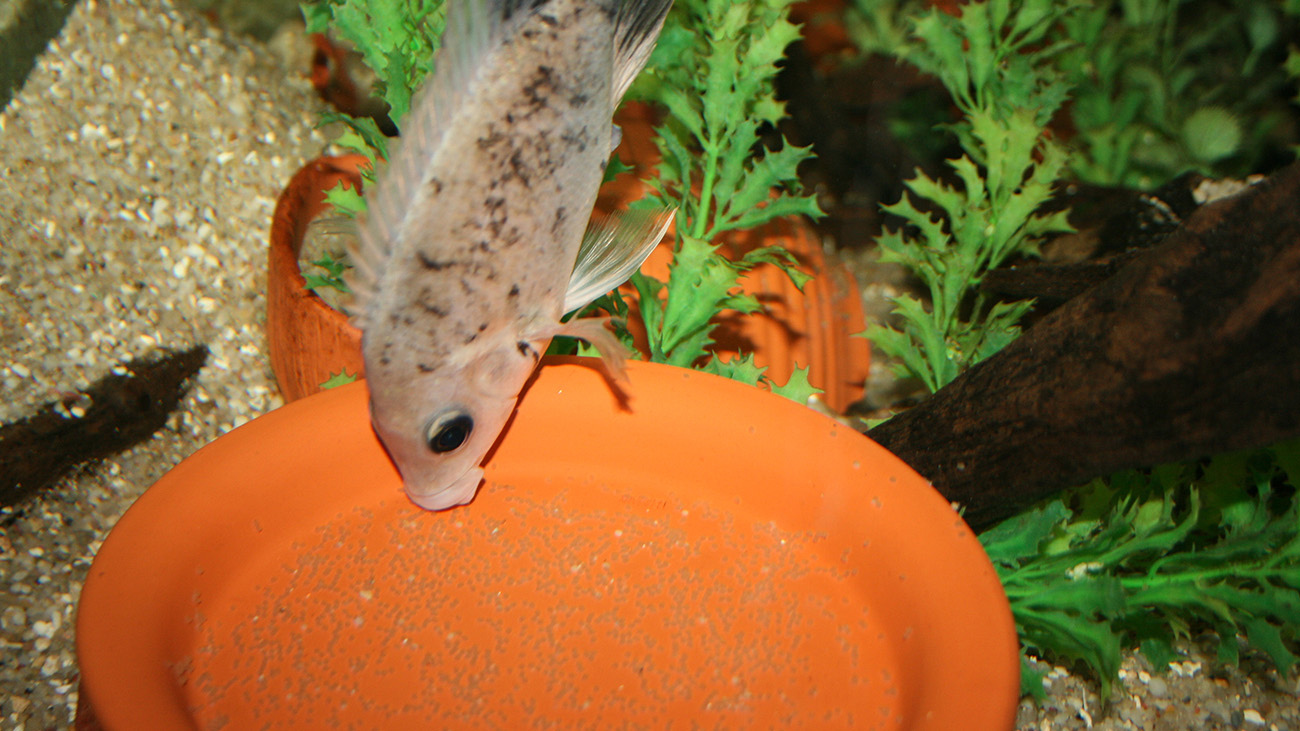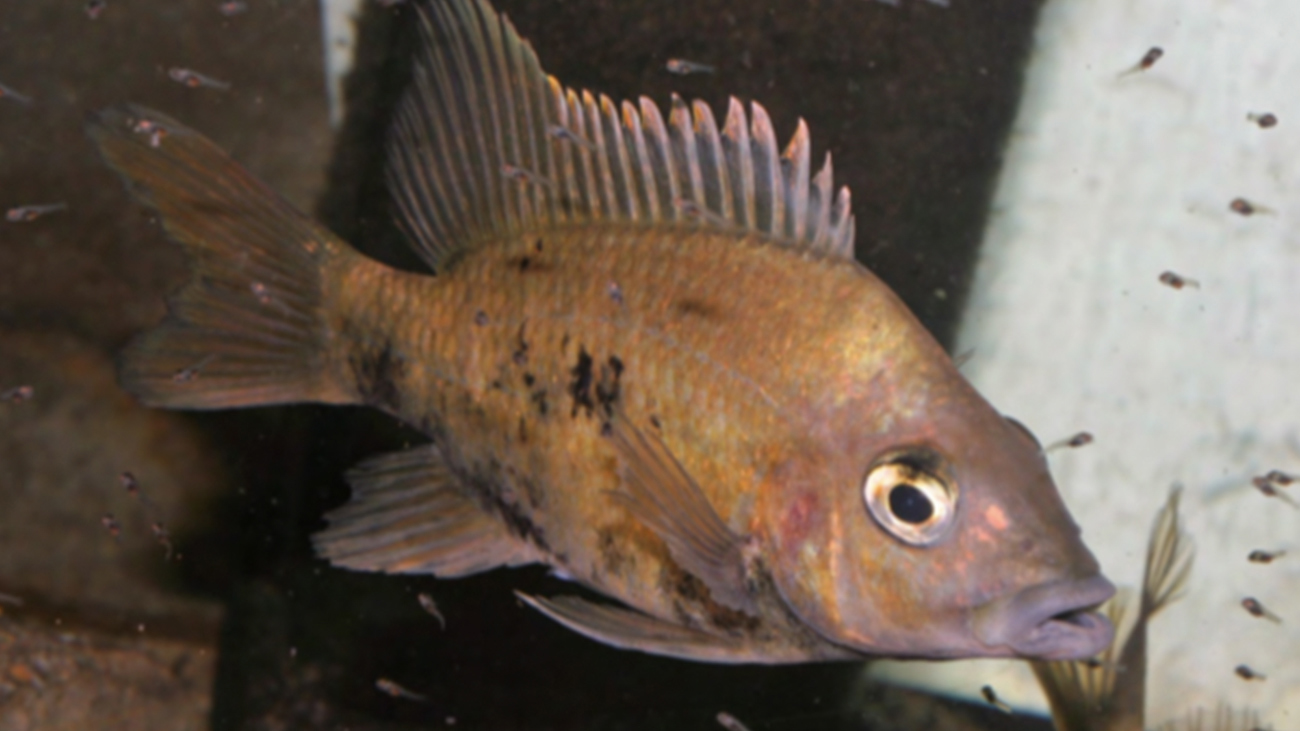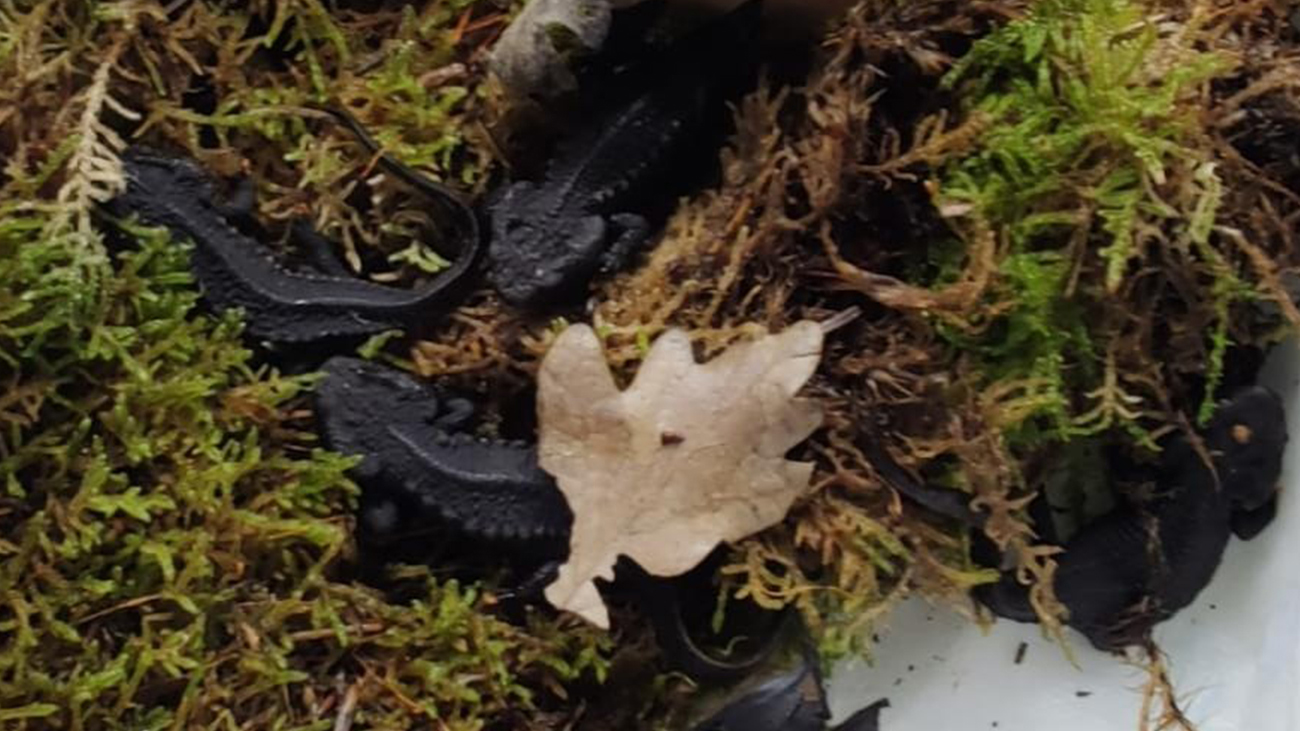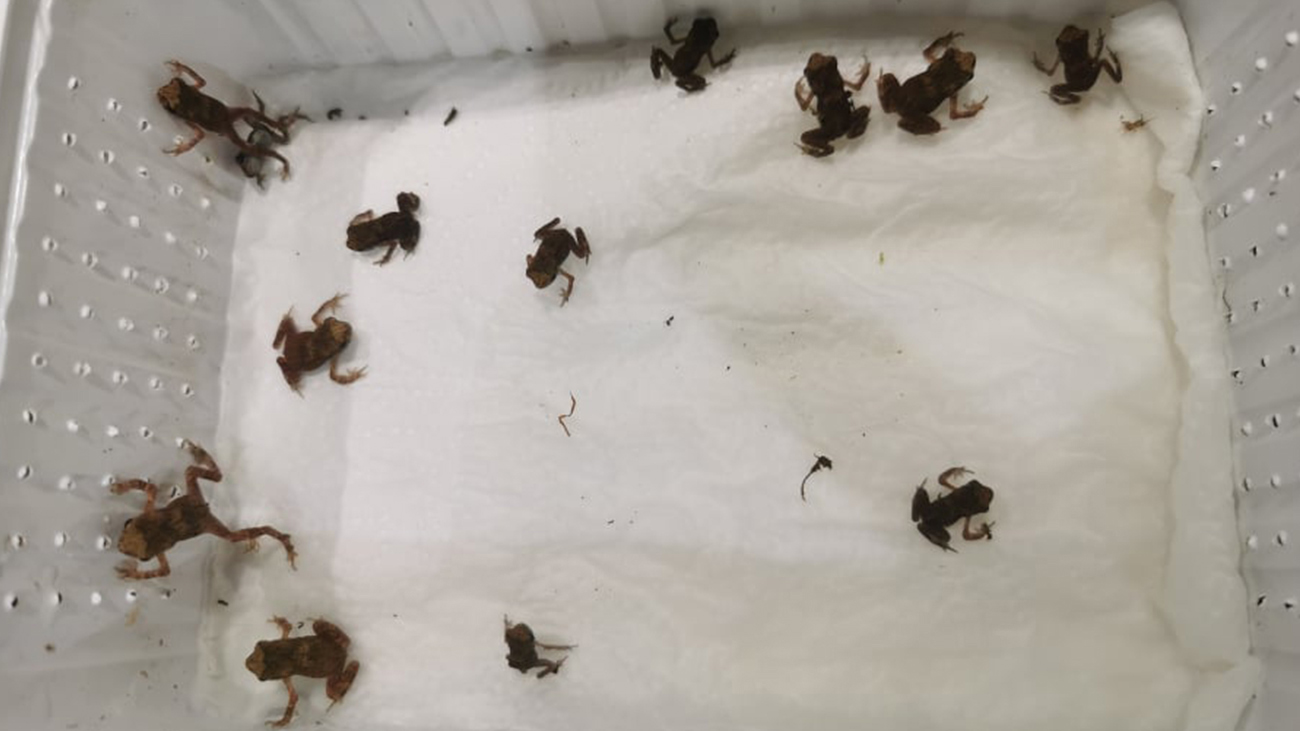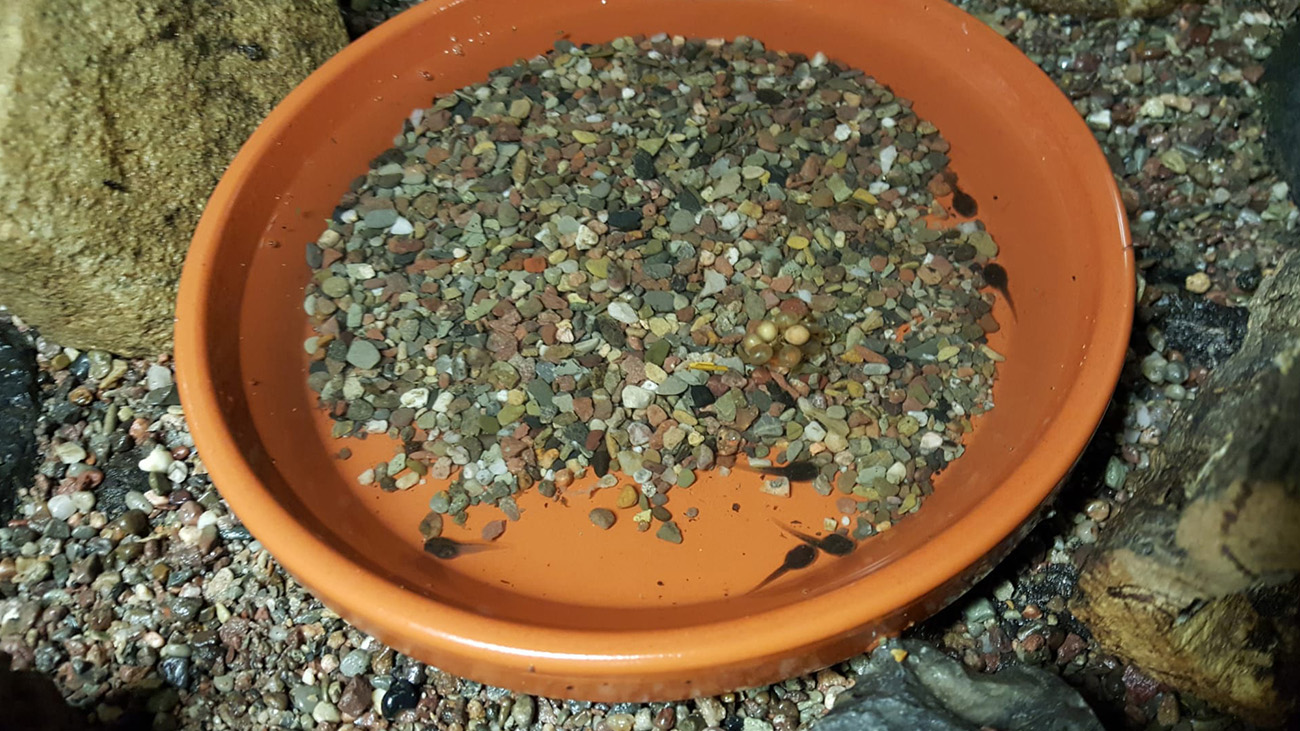
Today we'll have fish – Animal Inventory November 1st, 2021
The growth continues: Citizen Conservation was able to expand its animal population again in the period of April to October 2021. And this despite the fact that some individual projects (the import of frogs and toads from Ecuador and West Africa) had to be postponed further due to the pandemic. But in return we have taken in a whole new class. We proudly welcome: fish!
Madagascar's Endangered Freshwater Fauna
Fish are the most endangered vertebrate animal group on Madagascar. The Cologne Zoo has already been involved here for several years with its aquarium and establishs a conservation breeding network for these highly endangered species. We are pleased that CC could initially participate with three species: the Mangarahara cichlid (Ptychochromis insolitus), Loiselle´s Ptycho (Pytchochromis loisellei), and the Madagascar rainbowfish (Bedotia madagascariensis) can be taken in by interested aquarists and institutions. The first representatives of all three species are already swimming in CC tanks, and we are particularly pleased that there have already been offspring in a group of the Mangarahara cichlid, which was considered the “rarest fish in the world”. A fourth Madagascan cichlid, the Nosy Be cichlid (Ptychochromis oligacanthus), will be added soon.
Transition Period
The inclusion of fish is a logical step in CC’s strategy: the five-year pilot phase focused on amphibians ends in 2022, and it was part of our development mandate to prepare for the expansion of the program to other animal groups thereafter. So the Madagascan fish are the vanguard of a imminent CC #Fish section. The inclusion of other fish groups is currently in preparation as well as the establishment of corresponding organizational structures. The most important milestone is the spin-off of CC as an independent organization, which will take place soon.
Salamander-News
But, of course, things will continue with our long-established amphibians. CC’s fire salamander project is now really taking off. The salamanders are threatened by a deadly fungus that is wiping out entire populations. CC is therefore preparing to build ex-situ capacities to conserve several lineages of the charismatic salamanders. Starting with 92 fire salamanders distributed among six breeders.
With the highly endangered Ziegler’s crocodile newt (Tylototrtion ziegleri) we were able to welcome another crocodile newt species from Vietnam into our program.
The program continues
After first successes with the Vietnamese crocodile newt we had a setback – a bacterial infection killed one breeder’s flock of freshly metamorphosed newts so fast that unfortunately, all help was in vain. However, the other breeds are stable. Thus, the basic philosophy of CC already proves itself here: risk distribution by dividing the stock among many breeders. If something goes wrong with one, there are always others left. This makes our conservation breeding resistant to many problems.
We were successful with the Bony-headed Toads and the Chinese Fire-bellied Toads, which, as hoped, are proving to be optimal species for school and show facilities. We have also had some breeding successes with the Lake Patzcuaro Salamander. Since the larvae are still very young, they have not found their way into this inventory yet though.
Apart from that, we hope that our Almanzor fire salamanders will finally reach sexual maturity next year and provide for their first offspring. Good salamanders take time.
More information on the CC species.
Stock overview May 2023
(You can scroll horizontally in the table.)
| Wiss. Name | Dt. Name | Bestand Tiere (m/w/u) | Anzahl Haltungen | Todesfälle 05/23 – 10/23 (m/w/u) | Abgabe extern 05/23 – 10/23 | Zugänge Nachzucht 05/23 – 10/23 | Zugänge extern 05/23 – 10/23 | Ziel (Tiere, Halter) | Status* |
|---|---|---|---|---|---|---|---|---|---|
| Amphibien | |||||||||
| Agalychnis lemur | Lemur-Laubfrosch | 51 (13/10/28) | 8 | 9 (1/1/7) | 0 | 16 | 0 | 225, 40 | 21 % |
| Alytes muletensis | Mallorca-Geburtshelferkröte | 701 (12/13/676) | 37 | 26 (0/0/26) | 0 | 401 | 0 | 425, 53 | 85 % |
| Ambystoma andersoni | Andersons Querzahnmolch | 69 (20/21/28) | 8 | 11 (5/3/3) | 0 | 8 | 0 | 225,40 | 25 % |
| Ambystoma dumerilii | Pátzcuaro-Querzahnmolch | 206 (60/46/100) | 27 | 62 (0/0/62) | 11 | 41 | 0 | 225, 40 | 80 % |
| Atelopus balios | Rio-Pescado-Harlekinkröte | 29 (9/9/11) | 4 | 1 (0/1/0) | 0 | 0 | 30 | ** | ** |
| Bombina orientalis | Chinesische Rotbauchunke | 243 (37/22/184) | 21 | 13 (0/0/13) | 0 | 50 | 13 | 225, 60 | 68 % |
| Ecnomiohyla valancifer | San-Martín-Fransenbeinlaubfrosch | 22 (0/0/22) | 1 | 0 | 0 | 0 | 22 | ** | ** |
| Epipedobates tricolor | Dreistreifen-Blattsteiger | 45 (0/0/45) | 4 | 0 | 0 | 0 | 45 | ** | ** |
| Gastrotheca lojana | Loja-Beutelfrosch | 12 (0/0/12) | 1 | 0 | 0 | 0 | 12 | ** | ** |
| Ingerophrynus galeatus | Knochenkopfkröte | 40 (12/11/17) | 6 | 11 (6/0/5) | 0 | 0 | 5 | 225, 40 | 16 % |
| Minyobates steyermarki | Tafelberg-Baumsteiger | 26 (5/4/17) | 5 | 0 | 0 | 0 | 11 | 110, 20 | 24 % |
| Phyllobates terribilis | Schrecklicher Blattsteiger | 33 (9/5/19) | 4 | 6 (2/2/2) | 0 | 13 | 9 | 225, 70 | 10 % |
| Salamandra sal. almanzoris | Almanzor-Feuersalamander | 24 (17/7/0) | 7 | 0 | 0 | 0 | 0 | 185, 30 | 18 % |
| Salamandra salamandra (D) | Feuersalamander | 152 (19/12/121) | 16 | 3 (0/2/1) | 3 | 0 | 72 | 330, 90 | 32 % |
| Telmatobius culeus | Titicaca-Riesenfrosch | 41 (12/14/15) | 7 | 0 | 0 | 0 | 5 | 225,45 | 17 % |
| Tylototriton vietnamensis | Vietnamesischer Krokodilmolch | 200 (39/33/138) | 28 | 36 (6/9/21) | 0 | 5 | 38 | 185, 30 | 97 % |
| Tylototriton ziegleri | Zieglers Krokodilmolch | 24 (7/3/14) | 6 | 4 (3/1/0) | 0 | 0 | 0 | 185,30 | 16 % |
| Fische | |||||||||
| Bedotia madagascariensis | Madagaskar-Ährenfisch | 144 (24/20/100) | 10 | 33 (9/6/18) | 0 | 56 | 13 | 192, 16 | 69 % |
| Cyprinodon veronicae | Charco-Azul-Wüstenkärpfling | 16 (6/10/0) | 2 | 0 | 0 | 0 | 16 | ** | ** |
| Limia islai< | Tigerkärpfling | 49 (5/5/39) | 3 | 0 | 0 | 0 | 49 | ** | ** |
| Parosphromenus bintan | Bintan Prachtgurami | 8 (4/4/0) | 1 | 0 | 0 | 0 | 8 | ** | ** |
| Ptychochromis insolitus | Mangarahara-Buntbarsch | 452 (15/18/419) | 12 | 37 (8/8/21) | 10 | 222 | 0 | 192, 16 | 88 % |
| Ptychochromis loisellei | Loiselles Buntbarsch | 216 (18/18/180) | 7 | 46 (7/1/38) | 0 | 65 | 0 | 160, 16 | 72 % |
| Ptychochromis oligacanthus | Nosy-Be-Buntbarsch | 1096 (8/9/1079) | 4 | 10 (3/2/5) | 0 | 1000 | 0 | 192,16 | 63 % |
| Reptilien | |||||||||
| Cuora cyclornata | Vietnamesische Dreistreifen-Scharnierschildkröte | 1 (1/0/0) | 1 | 0 | 0 | 0 | 1 | ** | ** |
m: male, w: female, u: undetermined sex
* Status = mean value of the percentage of the target number of keepers already achieved and the target number of animals
** To be determined.
